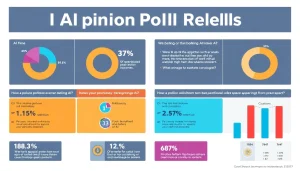Understanding Competitive Intelligence Services
What Are Competitive Intelligence Services?
Competitive intelligence services encompass the systematic gathering, analysis, and interpretation of data about competitors, market trends, and overall industry conditions. These services enable businesses to make informed decisions by providing rich insights into their competitive landscape. By leveraging competitive intelligence services, organizations can identify opportunities for growth, assess potential threats, and devise strategic advantages that can significantly enhance their market positioning.
The Importance of Competitive Intelligence in Business
In an ever-evolving business environment, the ability to anticipate and respond to competitor moves is crucial. Competitive intelligence serves several important functions:
- Informed Decision-Making: By understanding competitors’ strategies and market conditions, businesses can make more informed strategic decisions, including product development, marketing strategies, and pricing that respond effectively to changes in the market.
- Identifying Opportunities: Insight into competitors can unveil potential gaps in the market that a company can capitalize on, leading to increased market share and profitability.
- Mitigating Risks: Comprehensive analysis of competitor behavior helps in recognizing potential threats, allowing businesses to adopt preventive measures and adapt quickly to changing market dynamics.
- Enhancing Customer Understanding: Collecting data about customer preferences and behaviors through competitive intelligence can lead to more targeted and effective marketing strategies.
Key Features of Effective Competitive Intelligence Services
Effective competitive intelligence services exhibit several key features that distinguish them from standard market research:
- Data Sourcing: Combining various sources—both primary (surveys, interviews) and secondary (industry reports, news)—to triangulate data ensures accuracy and depth.
- Analytical Techniques: Utilizing advanced analytics tools and methodologies to interpret data, identify trends, and forecast future movements based on historical patterns.
- Actionable Insights: Rather than simply presenting data, effective competitive intelligence must translate insights into recommended actions that businesses can implement immediately.
- Ongoing Monitoring: Continuous analysis enables businesses to adapt to shifts in market dynamics swiftly, ensuring they remain competitive over time.
Types of Competitive Intelligence Services
Market Analysis and Competitor Tracking
Market analysis involves a comprehensive understanding of a business’s competitive landscape, including direct and indirect competitors. This includes:
- Competitor Profiling: Understanding the strengths and weaknesses, market share, product offerings, and strategic positioning of competitors.
- Trend Analysis: Identifying industry trends and consumer behavior patterns that can impact market dynamics.
- SWOT Analysis: Conducting Strengths, Weaknesses, Opportunities, and Threats analyses for both the organization and its competitors.
Consumer Insights and Behavior Research
Understanding the target market is paramount. Consumer insights gathered through competitive intelligence can include:
- Demographics: Analyzing age, gender, income level, and geographical distribution of target customers.
- Behavior Patterns: Understanding purchasing behaviors, brand loyalty, and spending patterns informed by market analysis reports.
- Consumer Feedback: Collecting reviews, ratings, and other feedback on competitors’ products to obtain insights into customer satisfaction and pain points.
Risk Assessment and Mitigation Strategies
Competitive intelligence plays a critical role in assessing potential risks to a business’s operations and reputation. Services include:
- Identifying Market Risks: Evaluating economic, regulatory, and competitive risks that could threaten the business model.
- Crisis Management: Developing strategies to mitigate the impact of negative competitive moves or market shifts.
- Reputation Monitoring: Keeping track of brand sentiment through reviews, social media monitoring, and public relations to preemptively address potential issues.
Implementing Competitive Intelligence Strategies
Steps to Integrate Competitive Intelligence into Your Business
Integrating competitive intelligence into an organization involves several systematic steps:
- Define Objectives: Establish clear objectives for what the organization hopes to achieve through competitive intelligence. This might include specific sales growth targets or market entry strategies.
- Gather Data: Leverage diverse sources of information to collect data relevant to your defined objectives.
- Analyze Information: Use analytical tools to interpret insights from the data collected, identifying patterns and actionable insights.
- Translate Insights into Strategy: Ensure that actionable insights lead to strategic adjustments—this could involve changing products, marketing strategies, or other business elements.
- Monitor and Adjust: Continuous monitoring of the competitive environment allows for refreshing strategies based on new findings.
Best Practices for Data Collection and Analysis
Effective data collection and analysis are critical for competitive intelligence success. To ensure accuracy and relevance, consider implementing the following best practices:
- Use Diverse Data Sources: Don’t rely solely on one type of data; use surveys, social media insights, website analytics, and industry reports to formulate a comprehensive understanding.
- Employ Technology: Utilize advanced analytical tools capable of handling big data to analyze trends and forecast outcomes quickly and accurately.
- Collaborate Across Departments: Involve multiple departments (marketing, sales, product development) in the CI process to accumulate a breadth of knowledge and insights.
- Stay Ethical: Maintain ethical standards in data collection, respecting privacy and legal guidelines to avoid risks associated with hostile corporate practices.
Tools and Software to Enhance Competitive Intelligence
Numerous tools and software solutions can facilitate competitive intelligence efforts:
- SEMrush: For tracking website traffic and competitor keywords.
- Ahrefs: Useful for backlink and SEO analysis of competitors.
- Crayon: This platform enables real-time tracking of competitor activity, changes in pricing, product launches, and other relevant market changes.
- Similarweb: Analyzes website traffic and user engagement metrics across various industries.
Measuring the Impact of Competitive Intelligence Services
Performance Indicators for Competitive Intelligence Success
To assess the effectiveness of competitive intelligence initiatives, businesses should establish clear performance indicators:
- Return on Investment (ROI): Measure financial gains arising from intelligence-driven strategies versus the cost of acquiring and implementing competitive intelligence services.
- Market Share Analysis: Track changes in market share resulting from informed strategic decisions.
- Customer Engagement: Observe how engaging with customer insights impacts overall satisfaction and retention rates.
- Speed of Decision-Making: Evaluate how CI influences the speed and accuracy of strategic decisions made within the organization.
Case Studies of Successful Competitive Intelligence Implementations
Examining specific cases where organizations have successfully implemented competitive intelligence can provide valuable lessons:
- Case Study 1: Tech Company X – After implementing a robust CI program, Tech Company X was able to identify a gap in the market for eco-friendly tech products. By acting on this insight, they increased their market share by 20% within a year.
- Case Study 2: Retailer Y – Retailer Y utilized consumer insights to revamp their product offerings based on competitor analysis, resulting in a significant increase in customer retention and sales growth over two quarters.
Continuous Improvement through Feedback Loops
To ensure long-term success in competitive intelligence, organizations should establish feedback mechanisms that allow for continuous learning and improvement:
- Solicit Feedback Regularly: Gather input from team members involved in CI initiatives to find out what’s working and what isn’t.
- Adjust Strategies: Be open to pivoting data-driven strategies based on market feedback and CI outcomes.
- Benchmarking: Regularly assess CI practices against industry standards to ensure the organization remains competitive in its intelligence efforts.
Future Trends in Competitive Intelligence Services
The Role of Technology in Competitive Intelligence
The future of competitive intelligence is heavily influenced by technology. Key trends include:
- AI and Machine Learning: Automation and predictive analytics will continue to play significant roles in transforming how data is collected and analyzed.
- Real-Time Data Analysis: The advance of technology will enable businesses to access real-time data, allowing for quicker response times in strategic initiatives.
- Integration with Other Business Functions: Competitive intelligence will increasingly merge with CRM systems and marketing automation platforms, offering a more holistic view of customer and market dynamics.
Adapting to Changing Market Conditions
As market landscapes become increasingly volatile, businesses will need to adapt their competitive intelligence practices. Strategies for adaptation include:
- Agility in Operations: Fast adaptation to insights gained through competitive analysis ensures firms remain responsive rather than reactive.
- Proactive Engagement: Engage with trends and shifts before they evolve into substantive threats or opportunities.
Ethical Considerations in Competitive Intelligence
Maintaining ethical standards in competitive intelligence is paramount. Organizations must:
- Abide by Legal Guidelines: Ensure compliance with laws regarding data privacy and corporate espionage.
- Promote Transparency: Maintain clarity about how data is gathered and used, extending to stakeholders involved in the intelligence process.





















+ There are no comments
Add yours